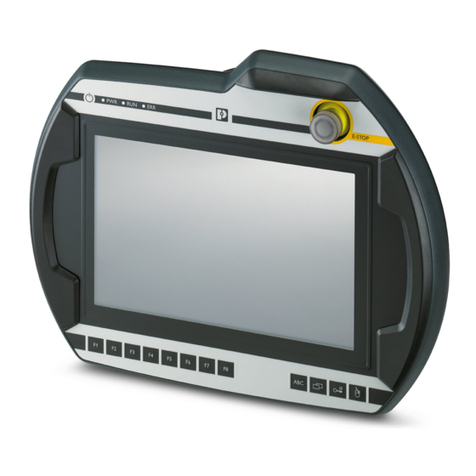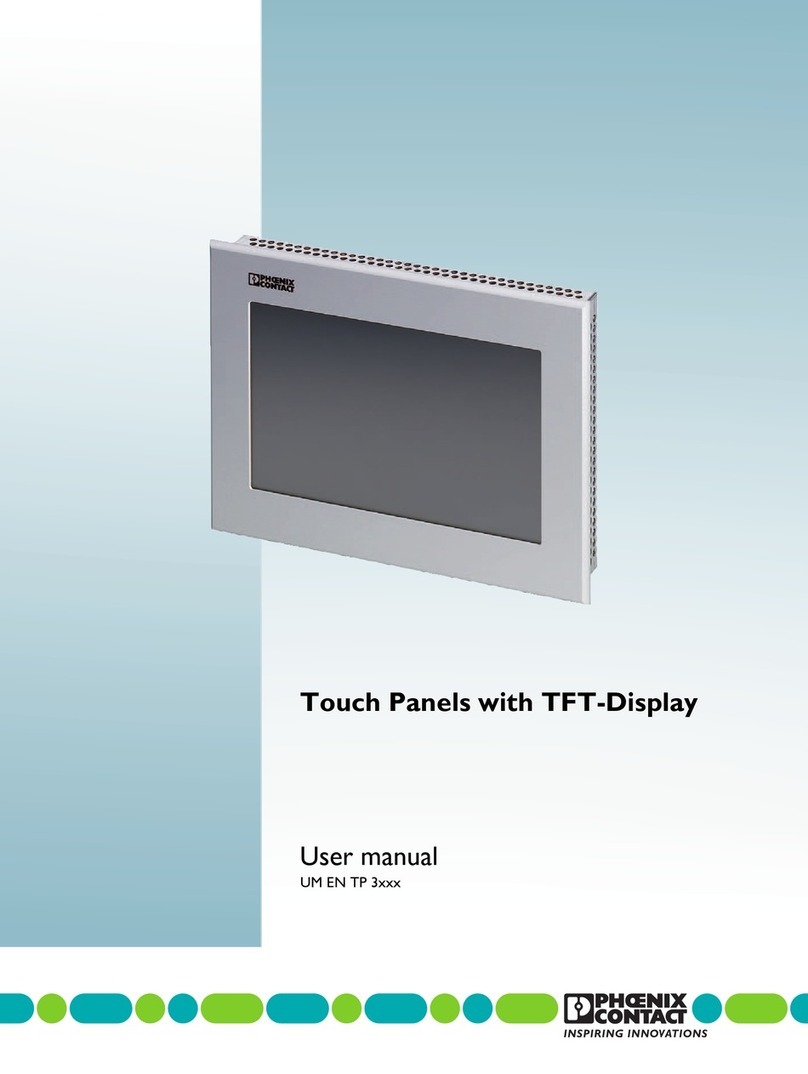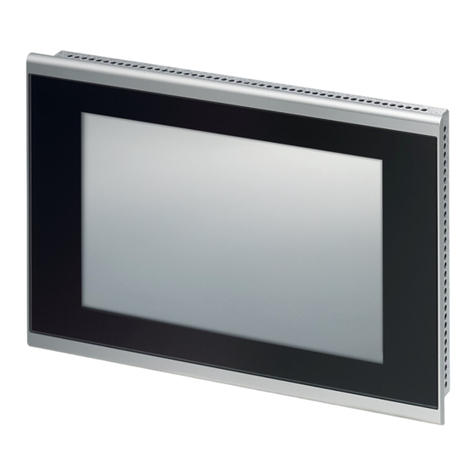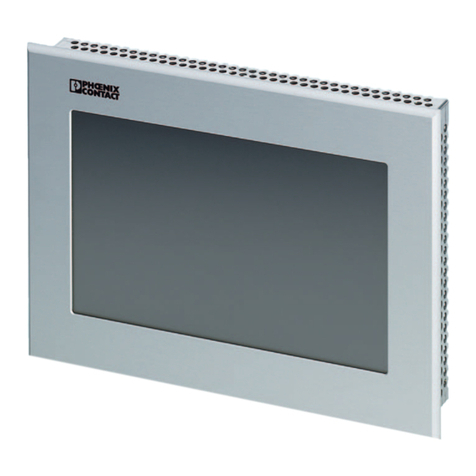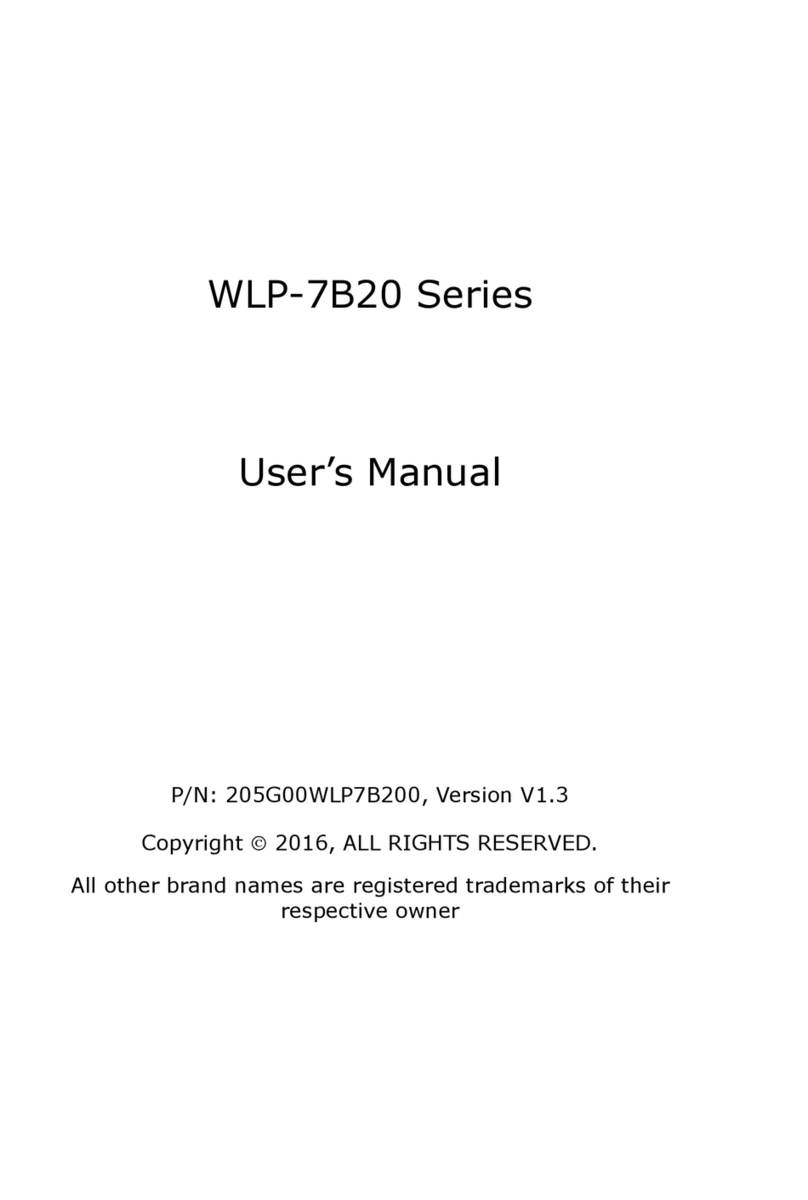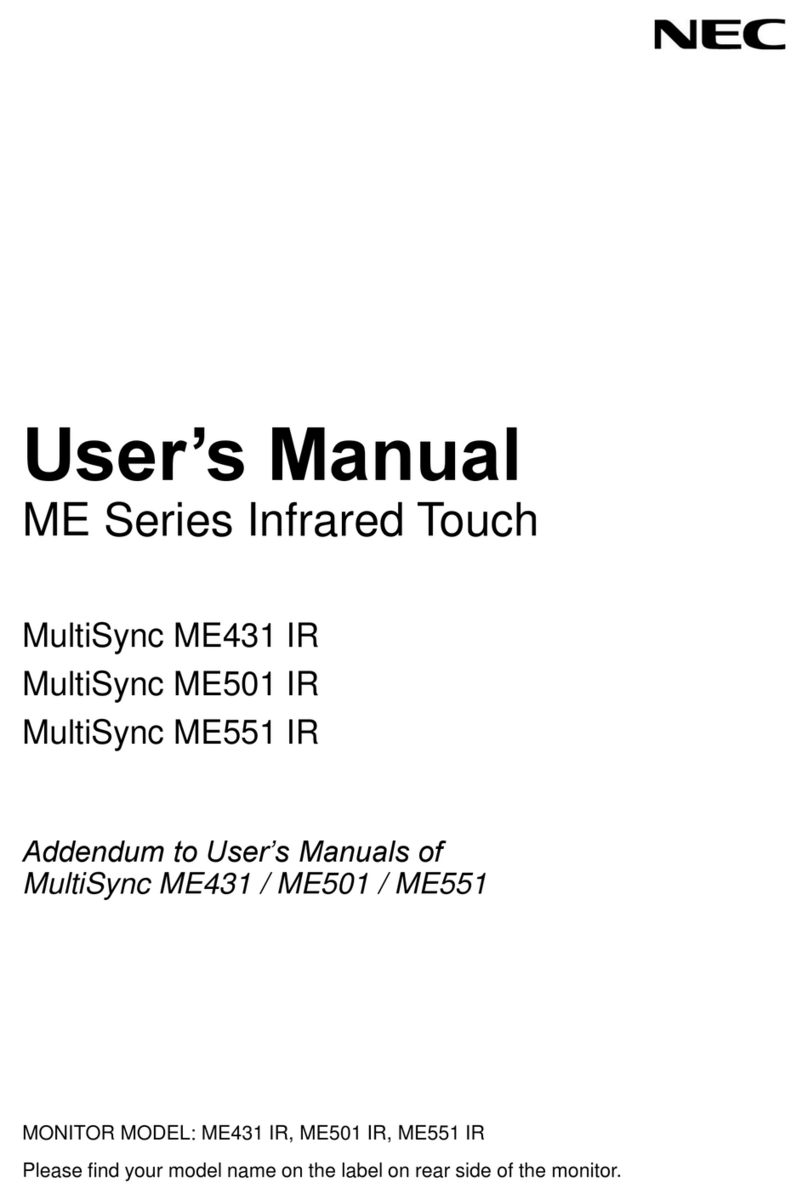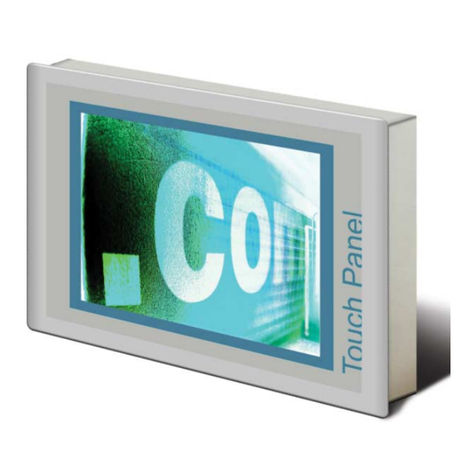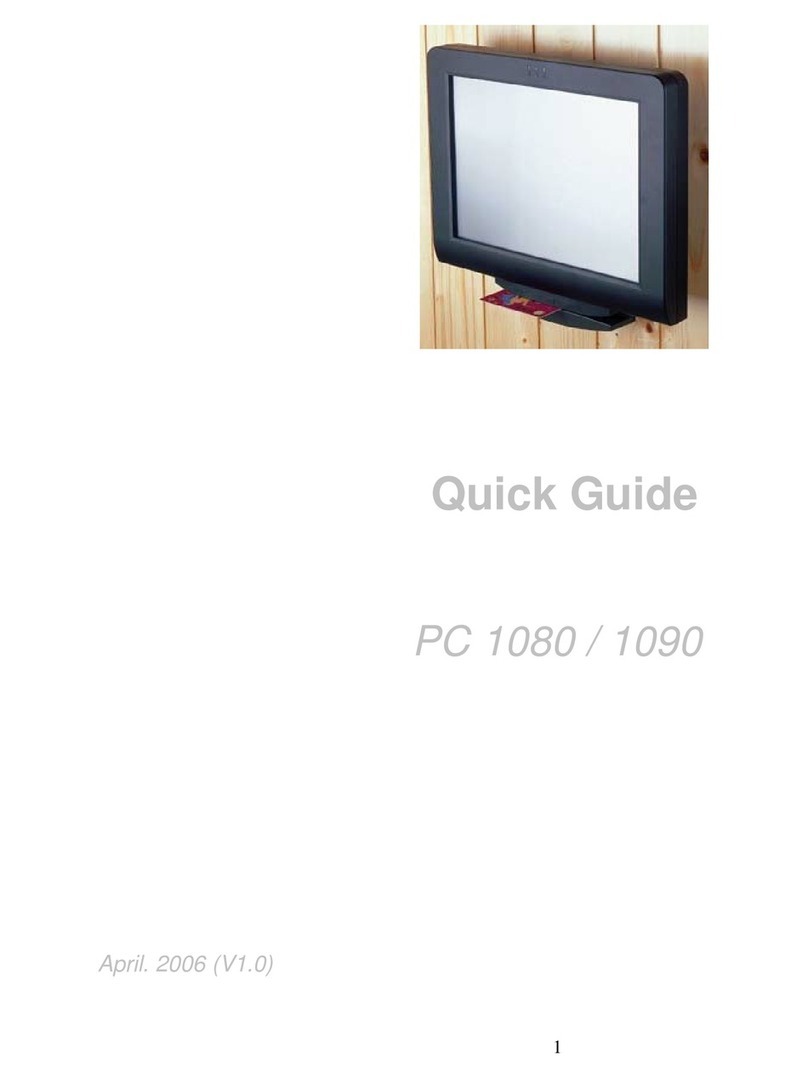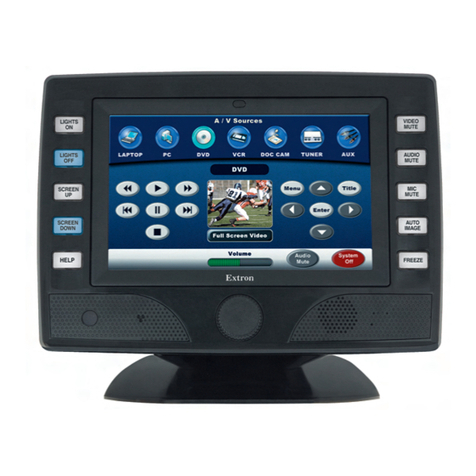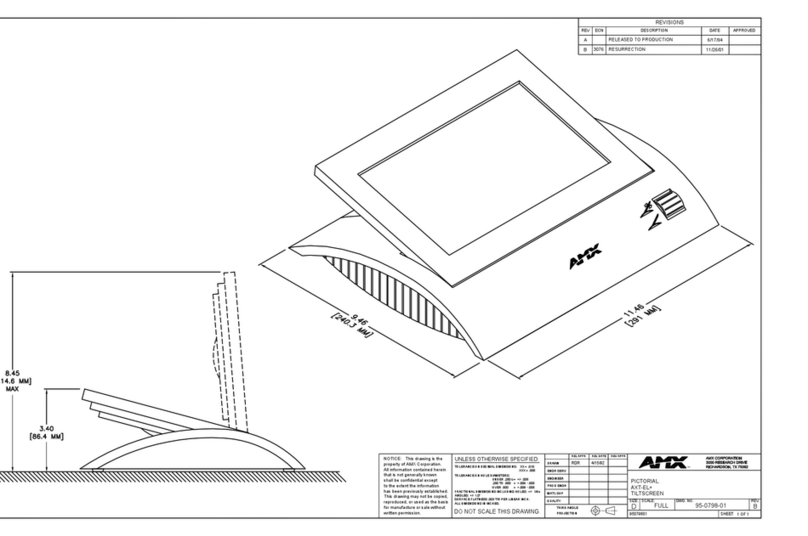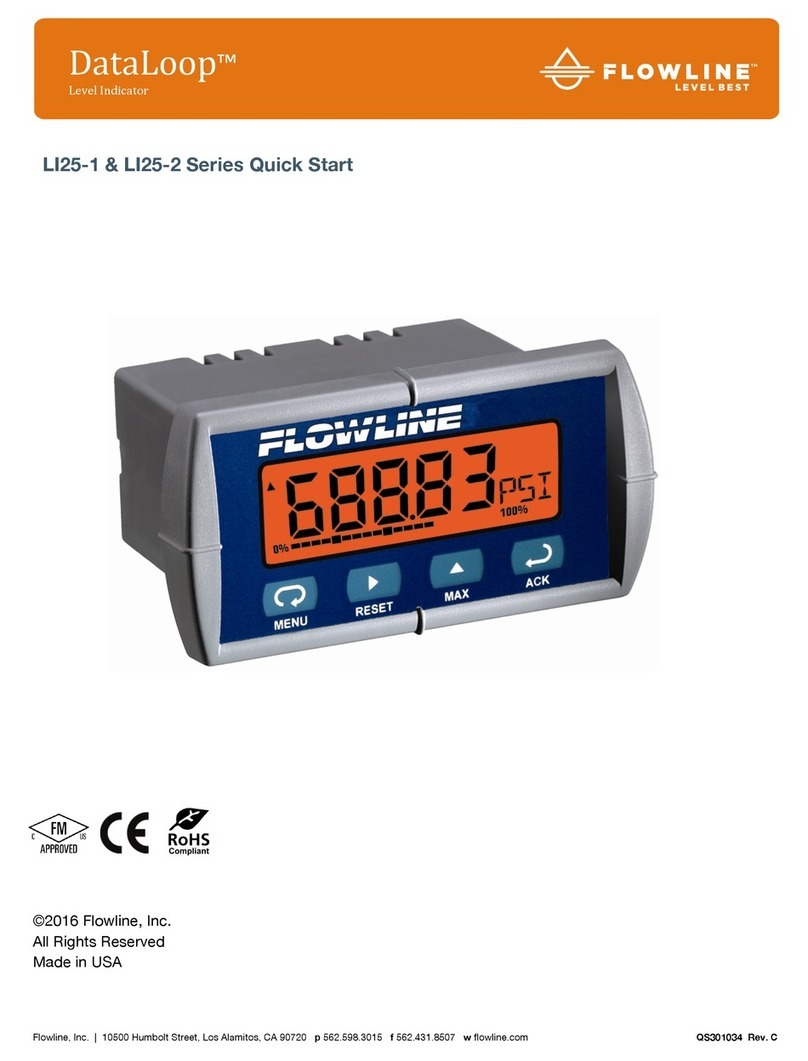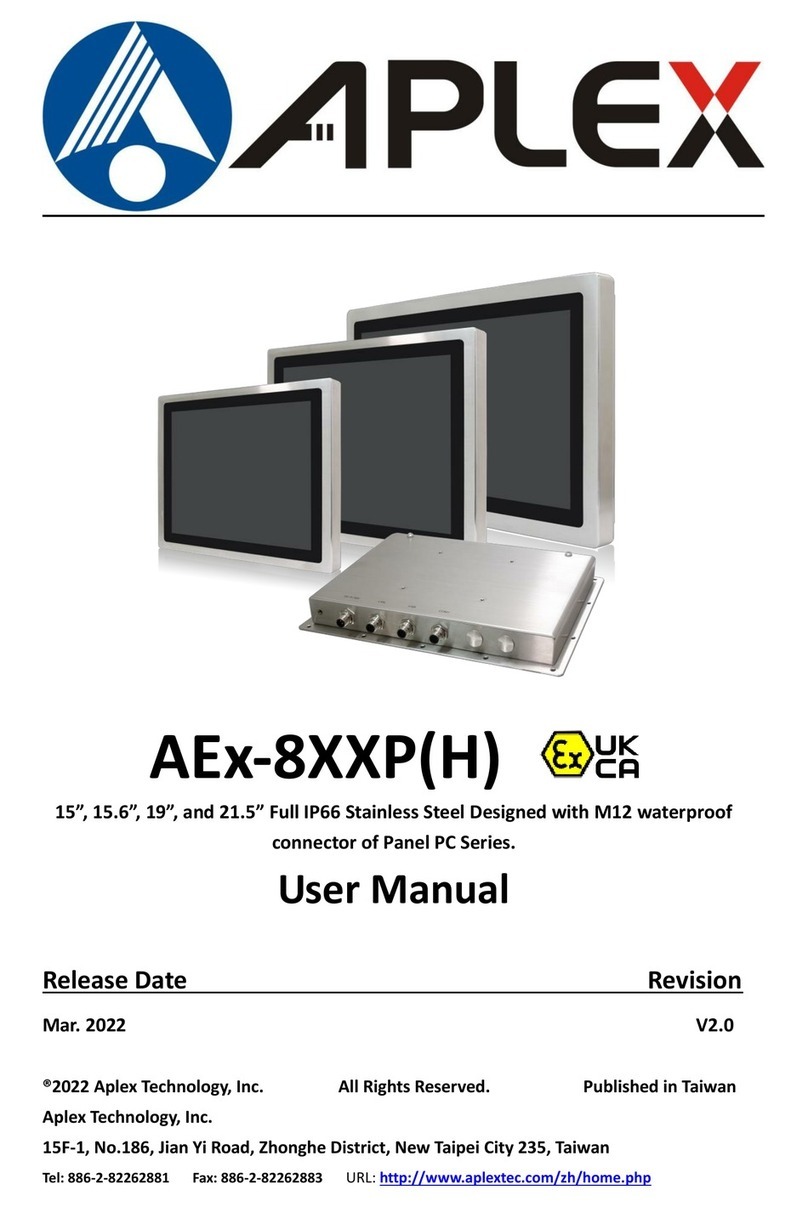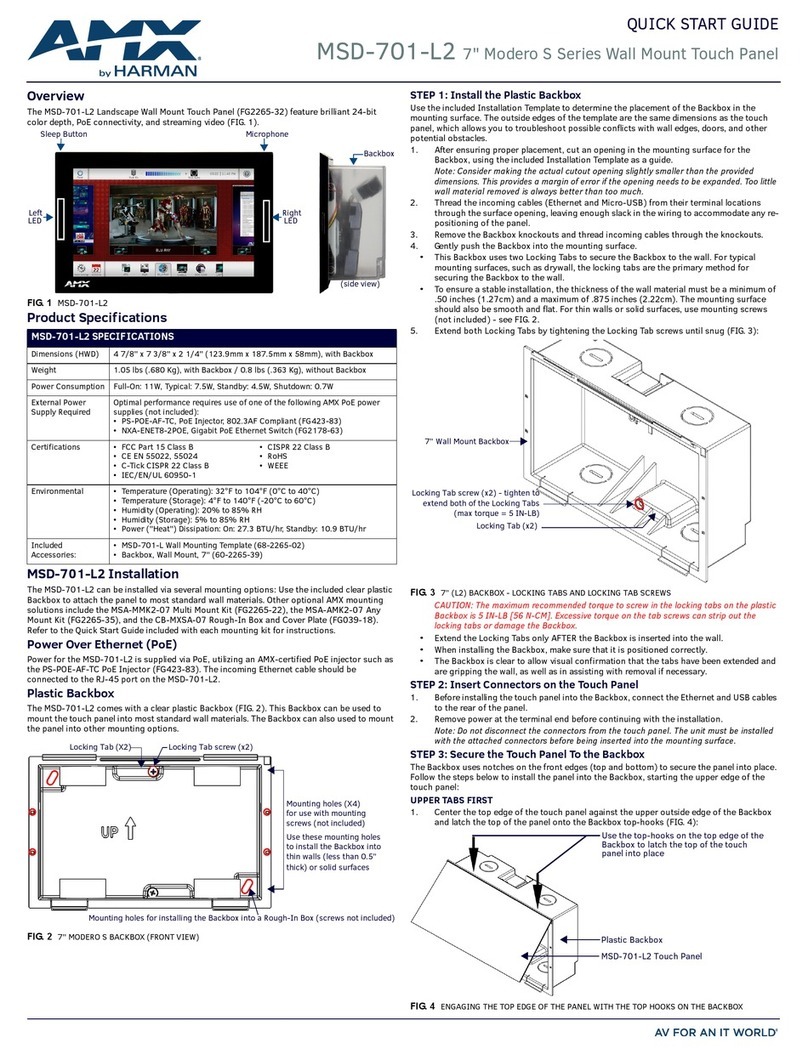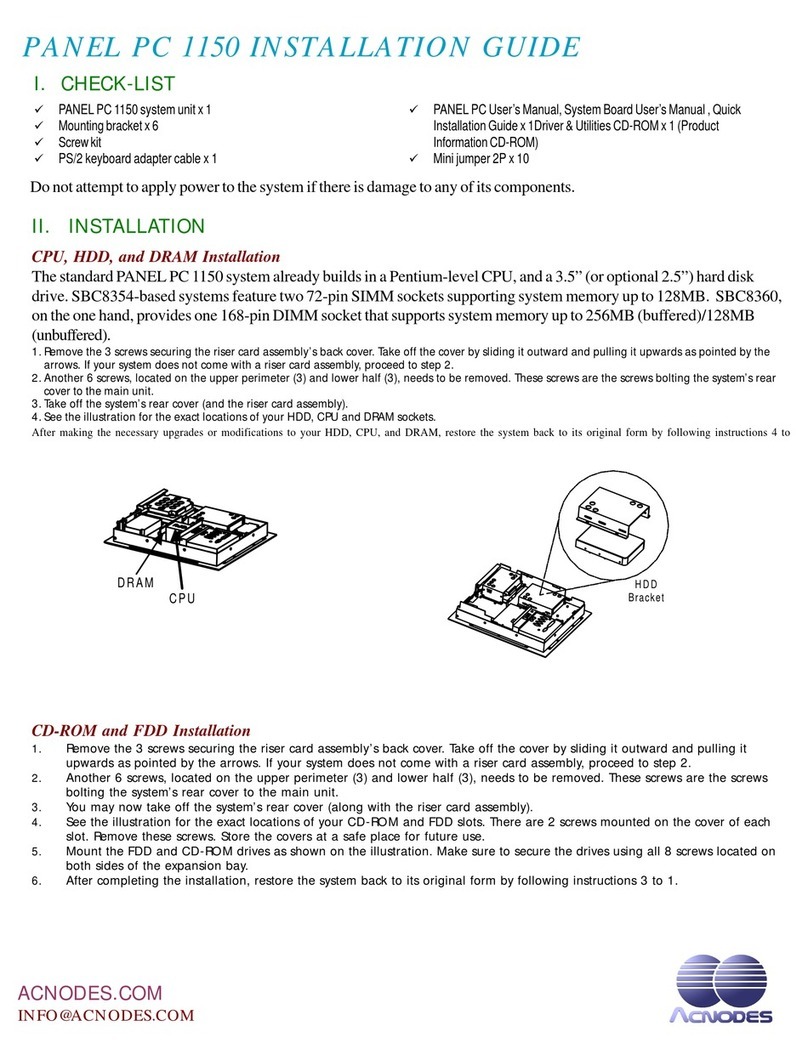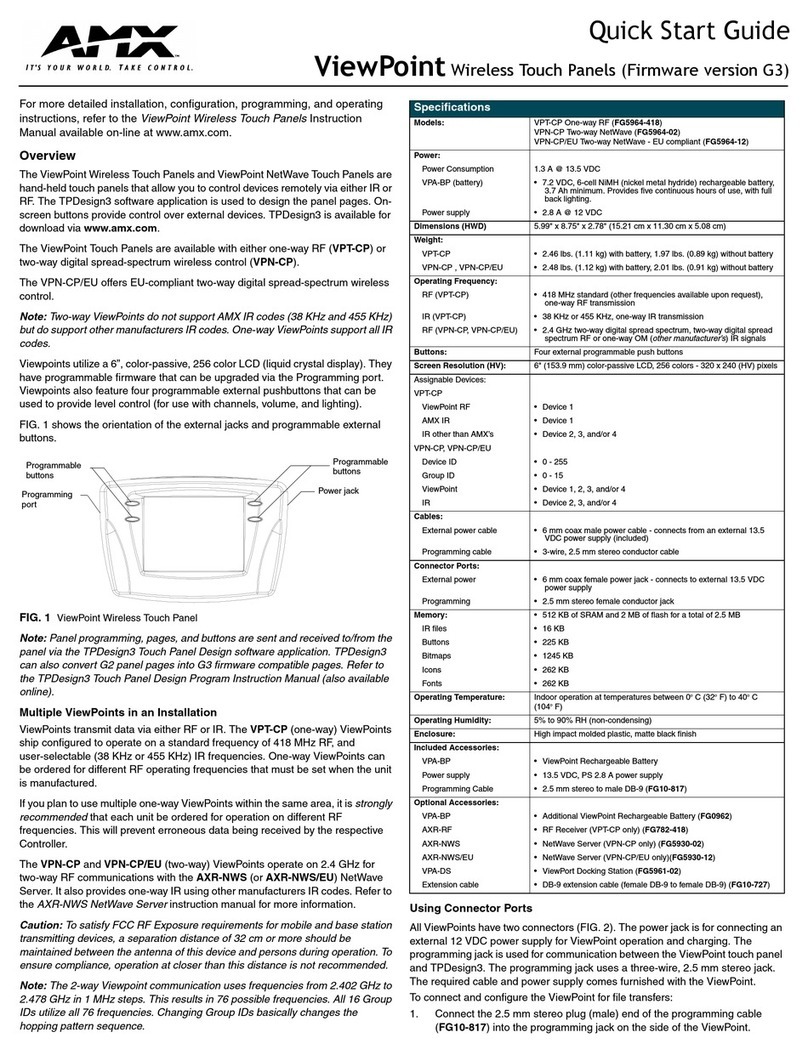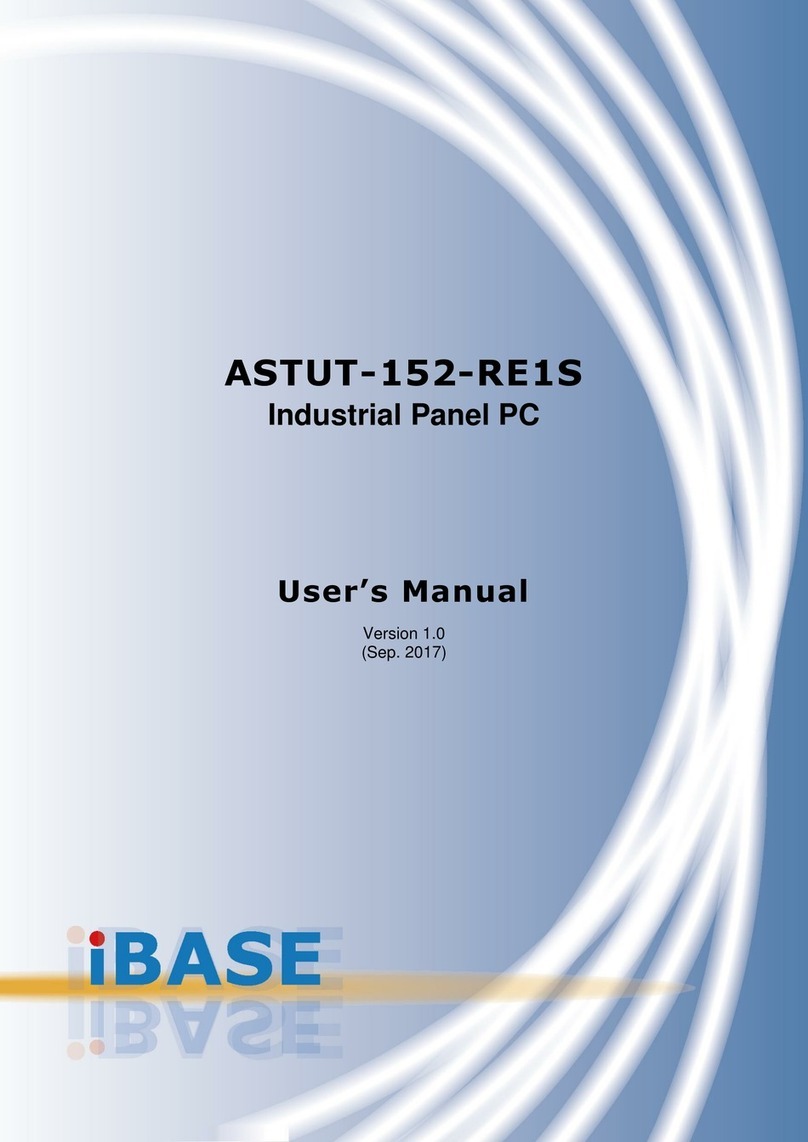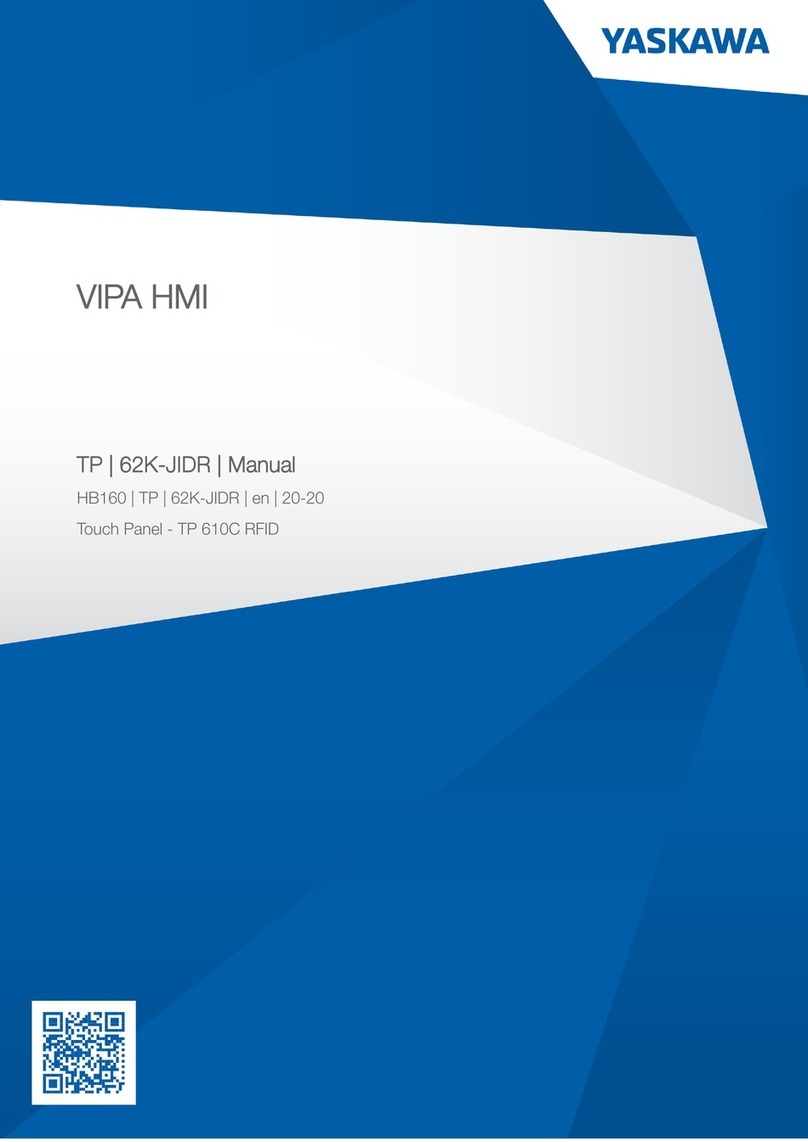
VL PPC 3000
3386_en_C PHOENIX CONTACT 6/16
Display – 17 in.
Display backlighting type CCFL LED
Screen size, diagonal 430 mm (16.93 in.) 430 mm (16.93 in.)
Screen size, horizontal x vertical 338 x 270 mm 338 x 270 mm
Resolution 1280 x 1024 1280 x 1024
Type Resistive touch screen Resistive touch screen
Brightness 350 Cd/m² 350 Cd/m²
Number of colors 16.7 million 16.7 million
Contrast ratio 1000:1 1000:1
View angle, horizontal/vertical (CR=10), typ. 85°/80° 85°/80°
Installation cutout dimensions (width x height) 424.0 x 329.5 mm 424.0 x 329.5 mm
Outside bezel dimensions (width x height x depth) 452.0 x 356.5 x 10 mm 452.0 x 356.5 x 10 mm
Backlight life, minimum 50000 hr. 50000 hr.
Interface (configurable option) USB 1.1/2.0, Type A USB 1.1/2.0, Type A
Display – 15 in.
Display backlighting type CCFL LED
Screen size, diagonal 378 mm (14.88 in.) 378 mm (14.88 in.)
Screen size, horizontal x vertical 304 x 228 mm 304 x 228 mm
Resolution 1024 x 768 1024 x 768
Type Resistive touch screen Resistive touch screen
Brightness 350 Cd/m² 400 Cd/m²
Number of colors 16.2 million 16.2 million
Contrast ratio 700:1 700:1
View angle, horizontal/vertical (CR=10), typ. 70°/65° 80°/70°
Installation cutout dimensions (width x height) 386.6 x 285.0 mm 386.6 x 285.0 mm
Outside bezel dimensions (width x height x depth) 410 x 309 x 10 mm 410 x 309 x 10 mm
Backlight life, minimum 50000 hr. 50000 hr.
Interface (configurable option) USB 1.1/2.0, Type A USB 1.1/2.0, Type A
Display – 12 in.
Display backlighting type CCFL LED
Screen size, diagonal 307 mm (12.1 in.) 307 mm (12.1 in.)
Screen size, horizontal x vertical 246 x 185 mm 246 x 185 mm
Resolution 800 x 600 800 x 600
Type Resistive touch screen Resistive touch screen
Brightness 400 Cd/m² 450 Cd/m²
Number of colors 16.2 million 16.2 million
Contrast ratio 600:1 700:1
View angle, horizontal/vertical (CR=10), typ. 70°/60° 80°/65°
Installation cutout dimensions (width x height) 334.0 x 253.0 mm 334.0 x 253.0 mm
Outside bezel dimensions (width x height x depth) 365 x 282 x 10 mm 365 x 282 x 10 mm
Backlight life, minimum 50000 hr. 50000 hr.
Interface (configurable option) USB 1.1/2.0, Type A USB 1.1/2.0, Type A
Mechanical tests
Shock test according to IEC 60068-2-27 15g, 11 ms impulse
Vibration resistance according to IEC 61131-2 Hard drive: 0.5g
SSD, CFast: 1.0g
